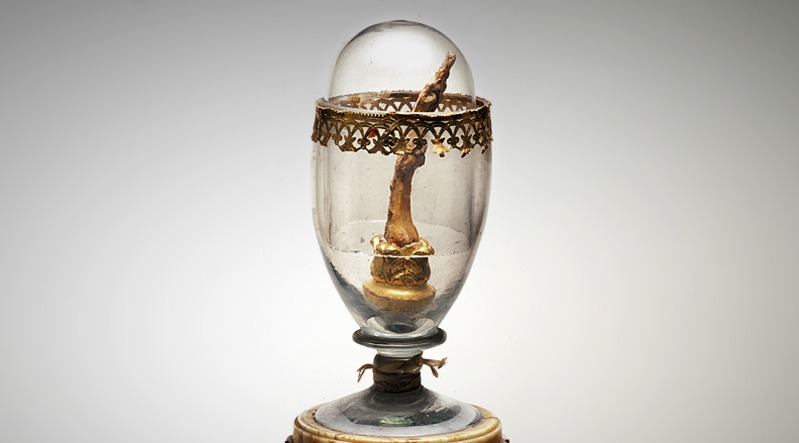Once in a while, science museums will astound you, not because they may feature some mesmerizing scientific instruments that were once used in epochal discoveries in science, but because they might also feature in their collection…a Middle Finger.
If that digit belonged to Galileo Galilei, your entrance ticket probably paid off. This relic is housed in one of Italy’s most prominent museums — the Galileo Museum (previously known as the Museum of the History of Science), in the city of Florence.
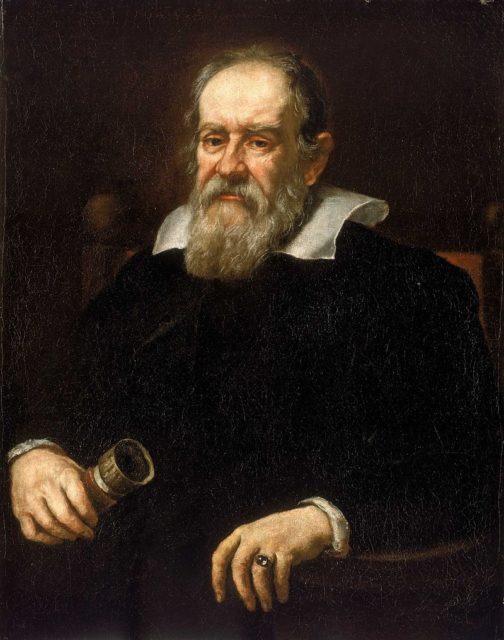
Looking bit creepy, the middle finger of Galileo’s right hand sits in an egg-shaped glass display case fixed atop a marble pedestal. Also on display in the museum are his right thumb, another finger, and a tooth.
The body parts were dissected from corpse of the great scientist during a reburial ceremony which took place more than eight decades after his death in 1642 when he was aged 77.
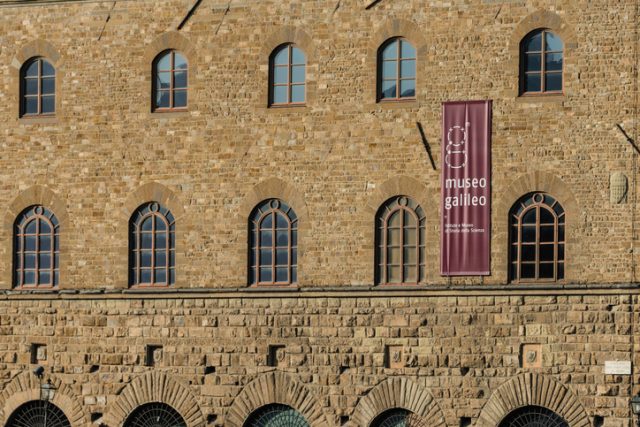
Since he had been judged a heretic by the Inquisition, Galileo wasn’t allowed a proper funeral in which he would be laid to rest next to his family. His remains were deposited in a small unmarked gravesite.
Galileo’s scientific findings made him a Number One enemy with the church, which is a well-known story. The Church denounced him for publicizing his heliocentric theory of the universe — the concept that it’s the Earth that revolves around the Sun, not the other way around — a ground-breaking theory at the time.
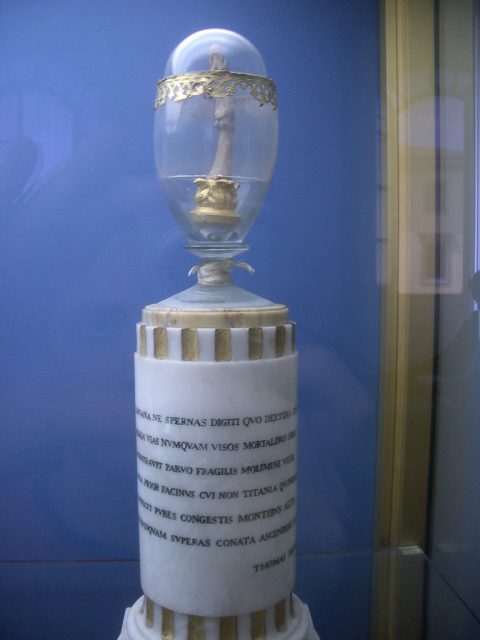
Such claims contradicted with the teachings of the Church and when Galilei defended his theory in 1632 in his Dialogue Concerning the Two Chief World Systems (Dialogo sopra i due massimi sistemi del mondo), he ultimately ended up in trouble.
The Church forced him to renounce what he wrote and consigned him to house arrest for the remainder of his days. Accordingly, Galileo’s book was placed in the infamous Index of Forbidden Books.
In the decades after Galileo’s death, evidence for the heliocentric universe mounted up and proved that the Inquisition was dreadfully wrong.
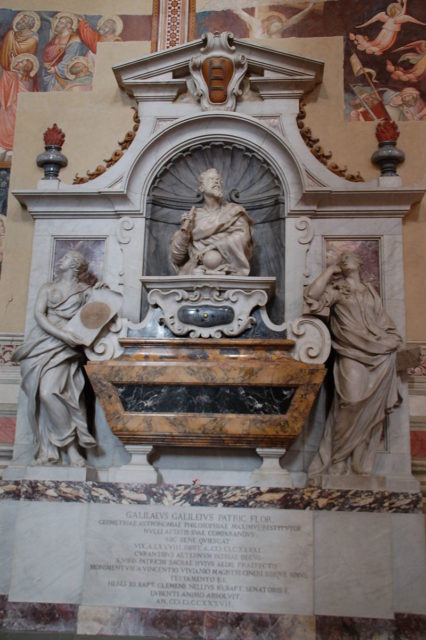
Almost half a century after Galileo, Isaac Newton presented his Universal Law of Gravitation and the Laws of Motion, setting the base for classical mechanics and categorically proving Galileo Galilei was right when he uttered his famous E pur si muove (“And yet it moves”).
To make up for its blunder, the church removed Galileo’s book from the blacklist in 1718, and on March 12, 1737, they allowed his remains to be exhumed and appropriately reburied at the Basilica of Santa Croce, not very far from where the Galileo Museum is located today in Florence, Italy.
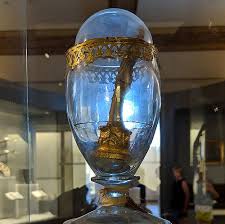
During the reburial, admirers of Galileo, such as Florentine antiquarian Anton Francesco Gori, sought to keep some body parts from him as relics. That’s how three of his fingers, a tooth, and a vertebra were removed from his corpse. The party attending also thought about removing the skull that once contained such a brilliant brain, but restrained.
Of all dislocated body parts, Galileo’s middle finger proved most attention-worthy.
The stolen body parts were revered as the relics of a saint, despite Galileo being deemed the biggest heretic on Earth at the time, the planet which the average 17th century mind deemed to be a static, motionless center of the universe.
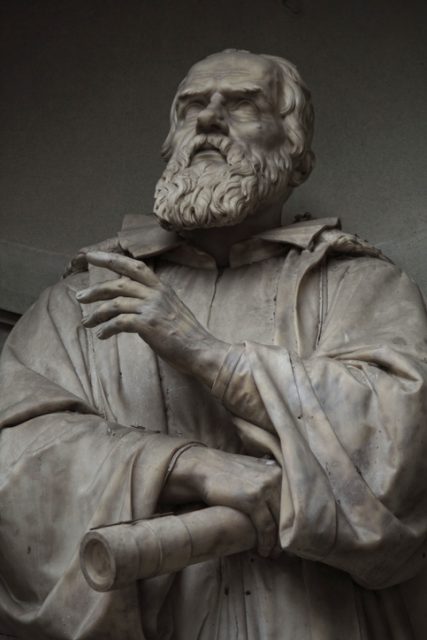
Galileo’s vertebra is held at the University of Padua, where he taught for many years. The remaining items were kept by private collectors until their sudden disappearance in 1905.
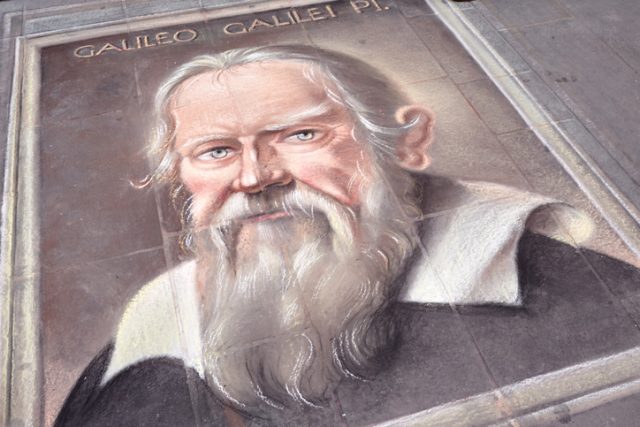
Over a century passed, and the lost fingers and tooth curiously enough showed up at auction in 2009. They were stored in an 18th century blown-glass vase, inside a wooden case with a bust of Galileo fixed on top. When the items were consigned to the auction their origin was unknown. They were purchased by Florence art collector Alberto Bruschi. He inspected his cryptic purchase together with his daughter.
The father and daughter identified a bust of Galileo on the top of the box and stumbled upon information that body parts from the scientist had been chopped off during his reburial ceremony, so they approached officials. More detailed research was carried out that confirmed these were indeed the missing remains of the “father of science.”
Read another story from us: The Bizarre Journey of Napoleon Bonaparte’s Penis
Accordingly, the relics were stored at the Florence-based museum, where visitors can also see other artifacts and instruments that were once used by Galileo Galilei.
